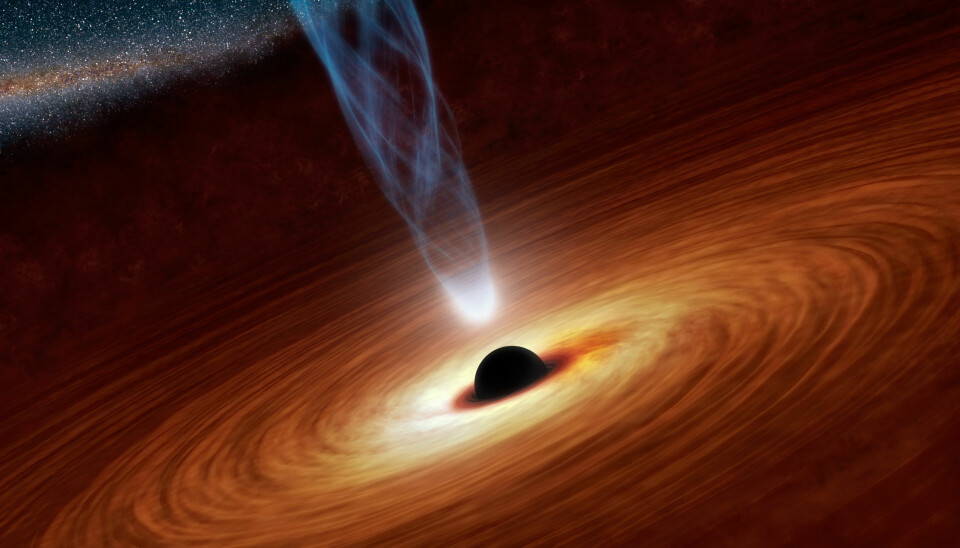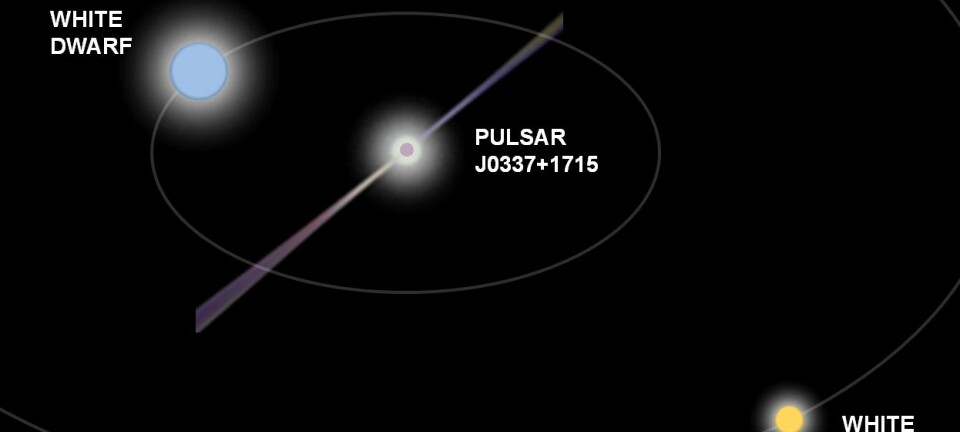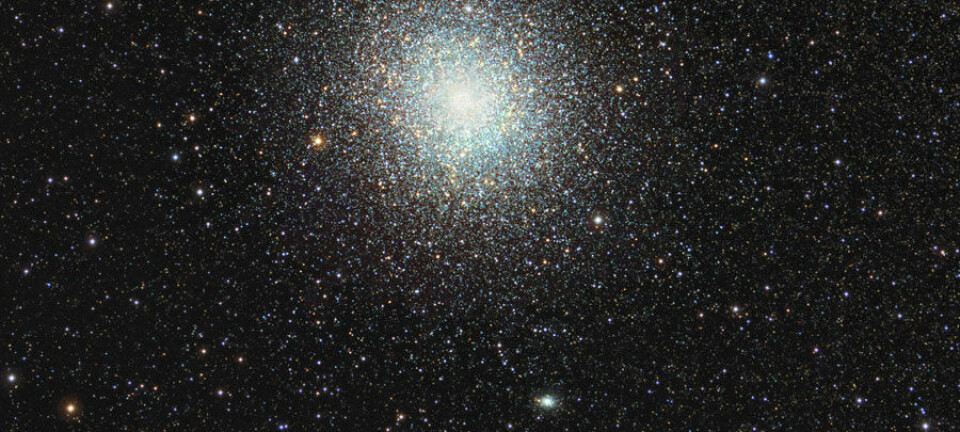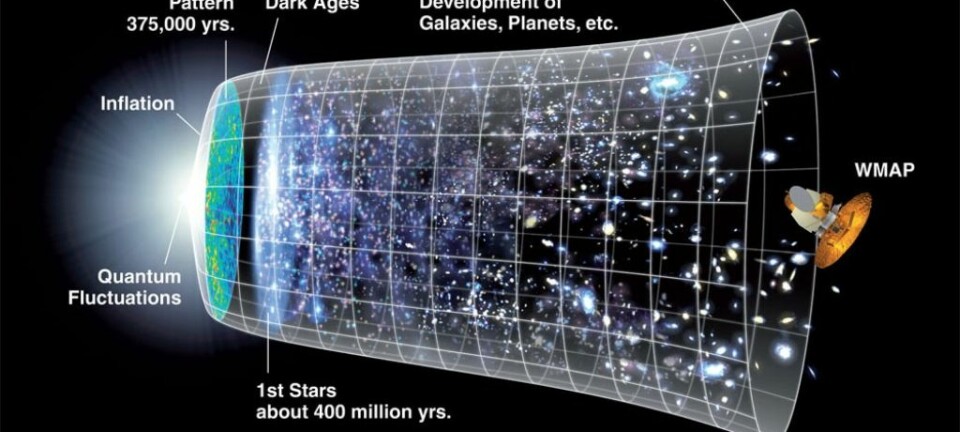
Black holes slow formation of new stars
New discovery helps us understand why galaxies have fewer stars than they're supposed to.
Galaxies are incredible. They consist of gas, dust, and billions of stars and solar systems – all bound together by their common gravitational pull.
At the cores of the galaxies rest collapsed stars with a mass so extreme that even light can't escape their gravitational field. For this reason, they’re known as black holes.
Black holes also determine how many stars there are in a galaxy. A new study has shown how the black holes emit powerful X-rays that propel surrounding particles out into the galaxy as gaseous winds.
This gas would otherwise have formed the flaming objects we know as stars, of which our own Sun is one.
"This is pretty incredible. It's the first time we have solid data confirming that black holes help create the content of a galaxy. Ultimately, this gives us a deeper understanding of why the universe looks the way it does," says Finn Erland Christensen, a senior scientist at DTU Space, the Department of Space Research and Space Technology. He is one of the scientists behind the new study published in Science.
Black holes arrest the formation of stars
Stars are normally formed when enormous gas and dust clouds collapse due to the force of gravity.
But because the black hole is propelling gas out of the galaxy, the formation of stars is arrested.
"For a long time, we’ve been able to that galaxies form fewer stars than predicted by our theories and simulations. It has been asserted for several years that black holes at the cores of galaxies may be the cause," says Ph.D student Andreas Skielboe from the Niels Bohr Institute at the University of Copenhagen.
"This is the first time we have data which confirms that black holes propel gas out of the galaxy and thereby arresting the formation of stars," he says. “This is big news.”
New technology paved the way
The international team of scientists studied the X-rays emanating from a quasar (a powerfully shining galaxy) using two satellites.
One of the satellites is equipped with a radar telescope particularly sensitive to 'hard' X-rays -- the kind which can escape the surrounding of a black hole and it was by studying these they made the new discovery.
"The black hole sucks in dust and matter from the entire galaxy and in doing so creates tremendous amounts of heat and electromagnetic radiation -- what we know as X-rays," says Christensen. “Using the new technology we were able to measure the X-rays and light given off by the galaxy in a way that was not previously possible.”
Galaxies accommodate 'a gaseous wind'
By analysing the energy spectrum of the emitted X-rays, the scientists were able to see that the galaxy emitted a gaseous wind that moved away from the black hole at speeds of between 30,000 and 90,000 kilometres per second -- the equivalent of some 10 to 30 per cent of the speed of light.
They were subsequently able to calculate that this wind came from the innermost ring of gas spinning around the black hole.
"We know that the gravitational force in the vicinity of a black hole is so powerful that it takes a lot of energy for anything to escape. There are huge quantities of gas in orbit around the black hole, which get sucked into the black hole, and it’s this gas that gets propelled out of the galaxy again," says Christensen.
"It is this gas that would otherwise accumulate and become a new star. But the precise extent to which the black hole stops the formation of stars is something we still have to investigate," says Skielboe.
------------
Read the original article in Danish on Videnskab.dk
Translated by: Hugh Matthews










